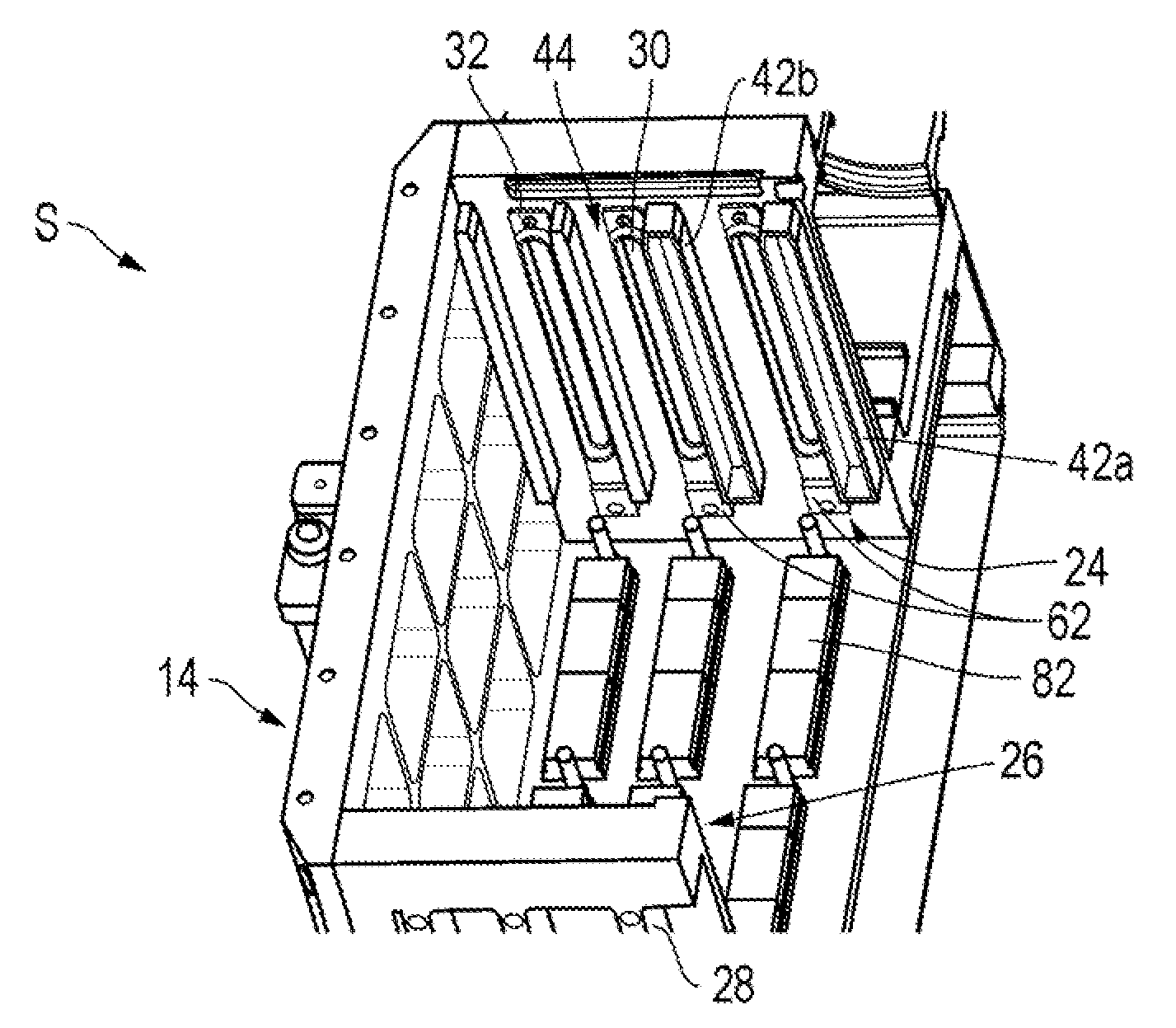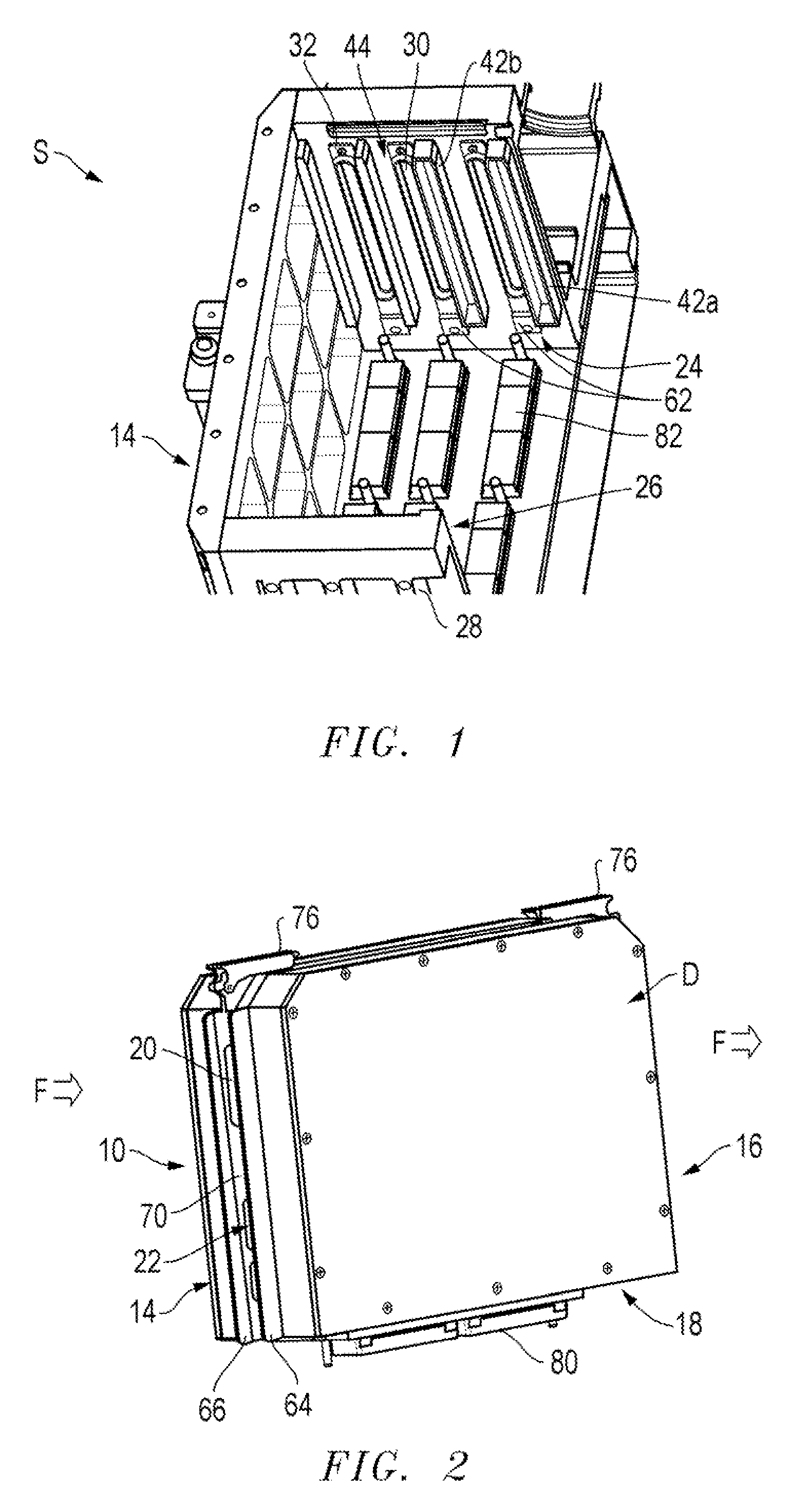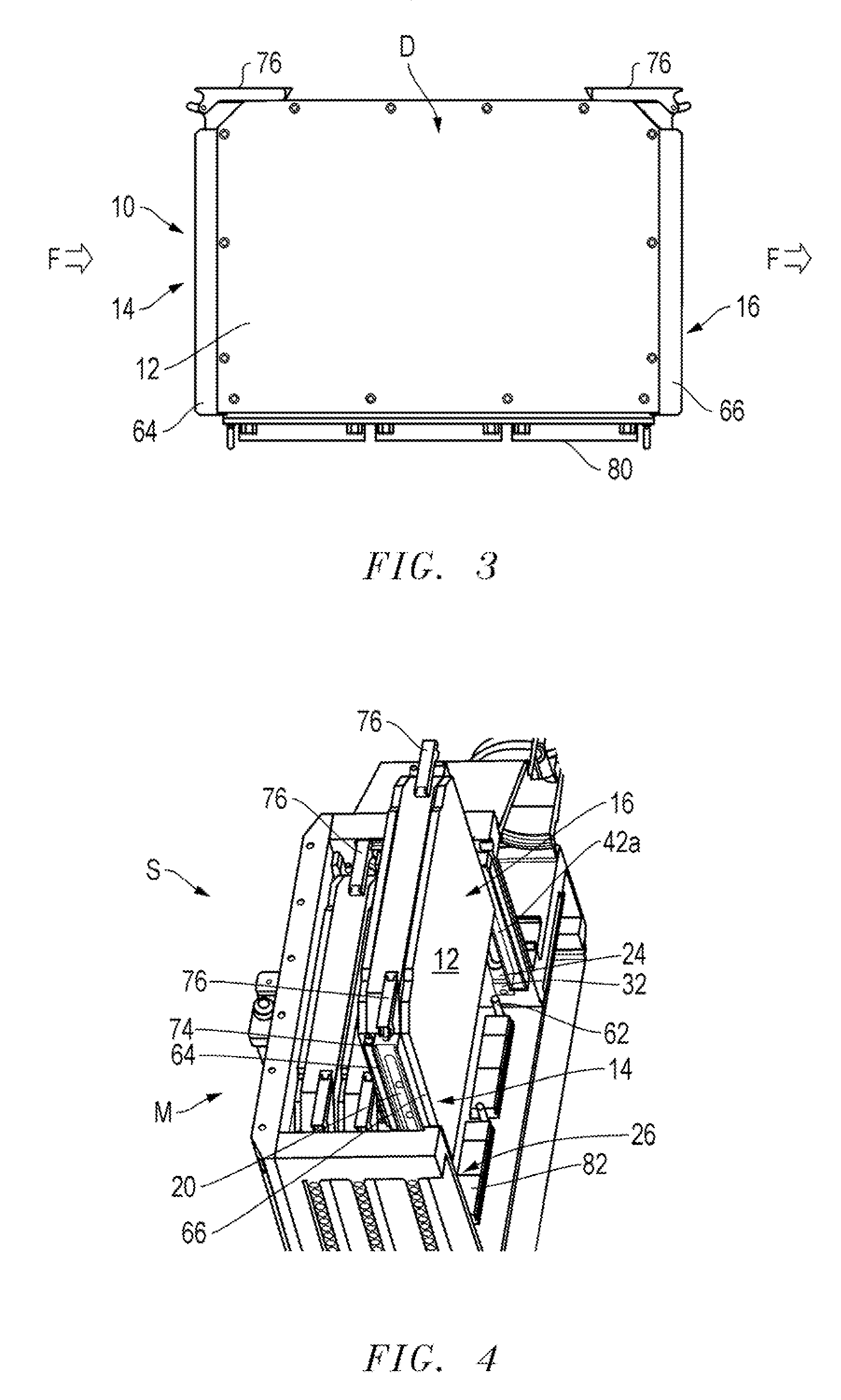Ruggedized, self aligning, sliding air seal for removable electronic units
- Summary
- Abstract
- Description
- Claims
- Application Information
AI Technical Summary
Benefits of technology
Problems solved by technology
Method used
Image
Examples
Embodiment Construction
[0029]So that the manner in which the above recited features, advantages and objects of the present invention are attained can be understood in detail, more particular description of the invention, briefly summarized above, may be had by reference to the embodiment thereof that is illustrated in the appended drawings. In all the drawings, identical numbers represent the same elements.
[0030]An electronics housing system S adapted for electronic devices D, such as radios, radars, transmitters, and the like, includes a main chassis unit or electronics rack M and at least one compatible and controllably removable module assembly 10 mountable with the base unit or electronic rack M for supporting electronic circuitry components, such as a printed circuit board 78, electrically or electro-optically coupled with the base unit M with cooperating connectors 80 and 82.
[0031]The removable module assembly 10 has a main body 12 that generally includes two opposing, vertical mounting edges 14, 16...
PUM
 Login to View More
Login to View More Abstract
Description
Claims
Application Information
 Login to View More
Login to View More - R&D
- Intellectual Property
- Life Sciences
- Materials
- Tech Scout
- Unparalleled Data Quality
- Higher Quality Content
- 60% Fewer Hallucinations
Browse by: Latest US Patents, China's latest patents, Technical Efficacy Thesaurus, Application Domain, Technology Topic, Popular Technical Reports.
© 2025 PatSnap. All rights reserved.Legal|Privacy policy|Modern Slavery Act Transparency Statement|Sitemap|About US| Contact US: help@patsnap.com



